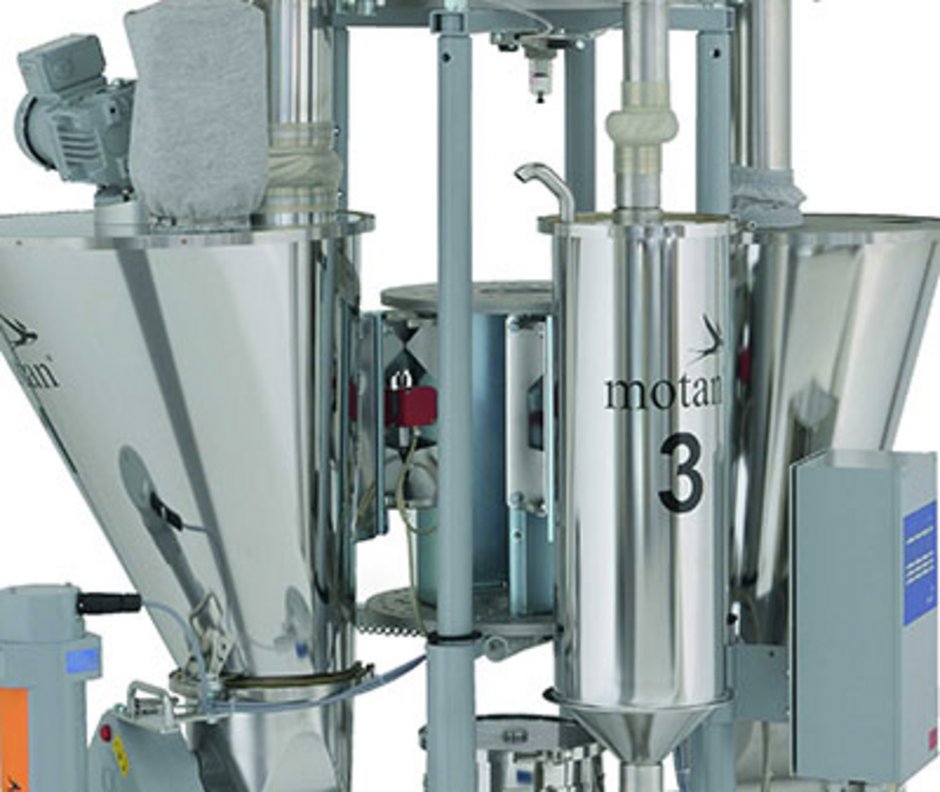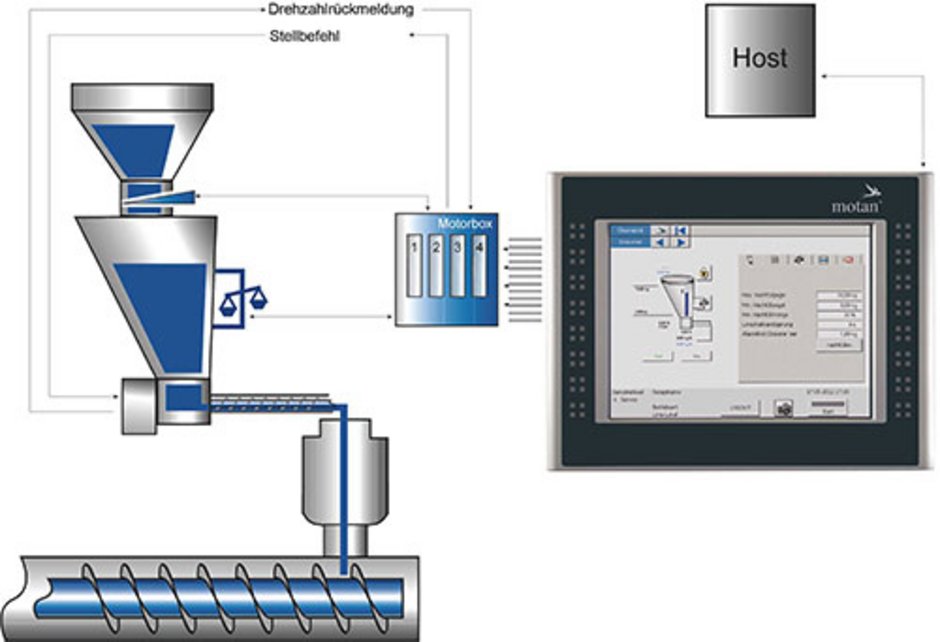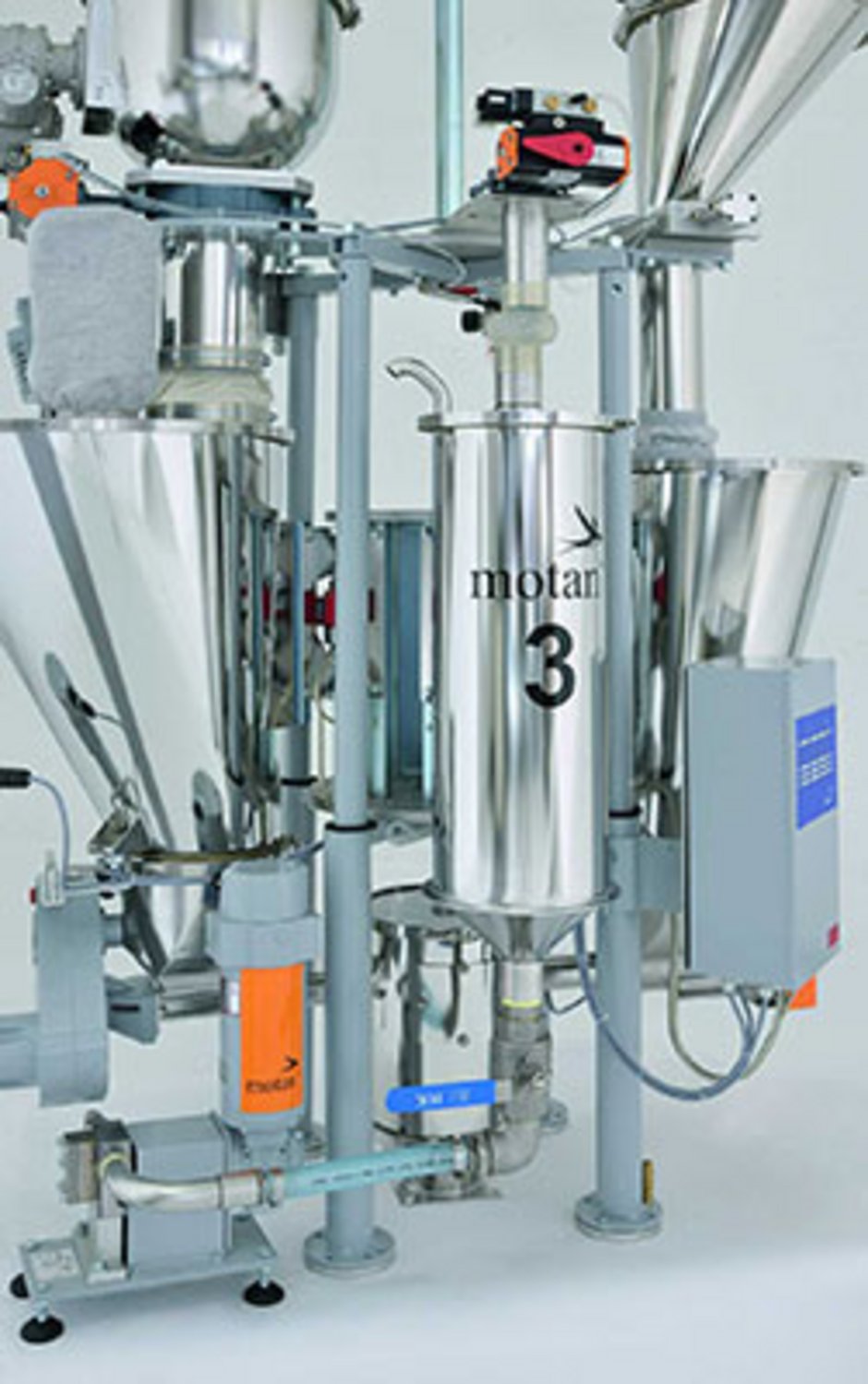09 - How do “loss-in-weight” dosing systems work?

“Loss-in-weight” gravimetric dosing systems begin by weighing the entire dosing module, including the dosing device, the supply hopper and its contents. As the material is dosed, a weigh scale measures the difference in weight per unit of time.

Because all components are dosed at the same time, each dosing module is fitted with a high-resolution load cell. The control system monitors and regulates the flow rate based on a signal emitted by the load cells. Weight loss in the dosing hopper is measured at fixed intervals in very quick succession, and these values are transmitted in real time. On the basis of the loss-in-weight measurement, the system is able to calculate the actual throughput.
By comparing actual throughput with the defined “target” throughput, the control system can immediately detect any discrepancies. These can then be corrected by adjusting the dosing screw speed of the dosing module.

By comparing actual throughput with the defined “target” throughput, the control system can immediately detect any discrepancies. These can then be corrected by adjusting the dosing screw speed of the dosing module.
Each material is continuously dosed into a collecting bin, and all ingredients are dosed simultaneously. As a result, the ingredients are already mixed by the time they enter the feed throat of the processing machine – so segregation issues do not arise.
Once the material in the supply hopper of the dosing module has reached the minimum level, it must be refilled – usually from a refill hopper. The loss-in-weight dosing process can be broken down into three stages: refilling, calming and dosing.
Because the weigh cell cannot differentiate between dosing and refilling, the system switches to the volumetric principle during the refill and calming stages, and then back to the gravimetric method during the dosing phase.
When using loss-in-weight systems, variations in bulk density, grain size and rheology have virtually no impact on the accuracy of the outcome, as the flow rate is continuously monitored and regulated on the basis of weight. However, it is important to ensure that the dosing devices are sufficiently full of material – this is why high-quality systems feature integrated, fully automatic material refilling systems.
Gravimetric dosing enables precise calculation of the amount of material used and seamless quality monitoring. It is also possible to specify and document the composition of finished products for the entire production cycle, in terms of the type and proportions of individual ingredients used.
You want to see the differences between “loss-in weight”- and “gain-in-weight” dosing systems? Our full range of dosing systems you can find on www.motan.com
